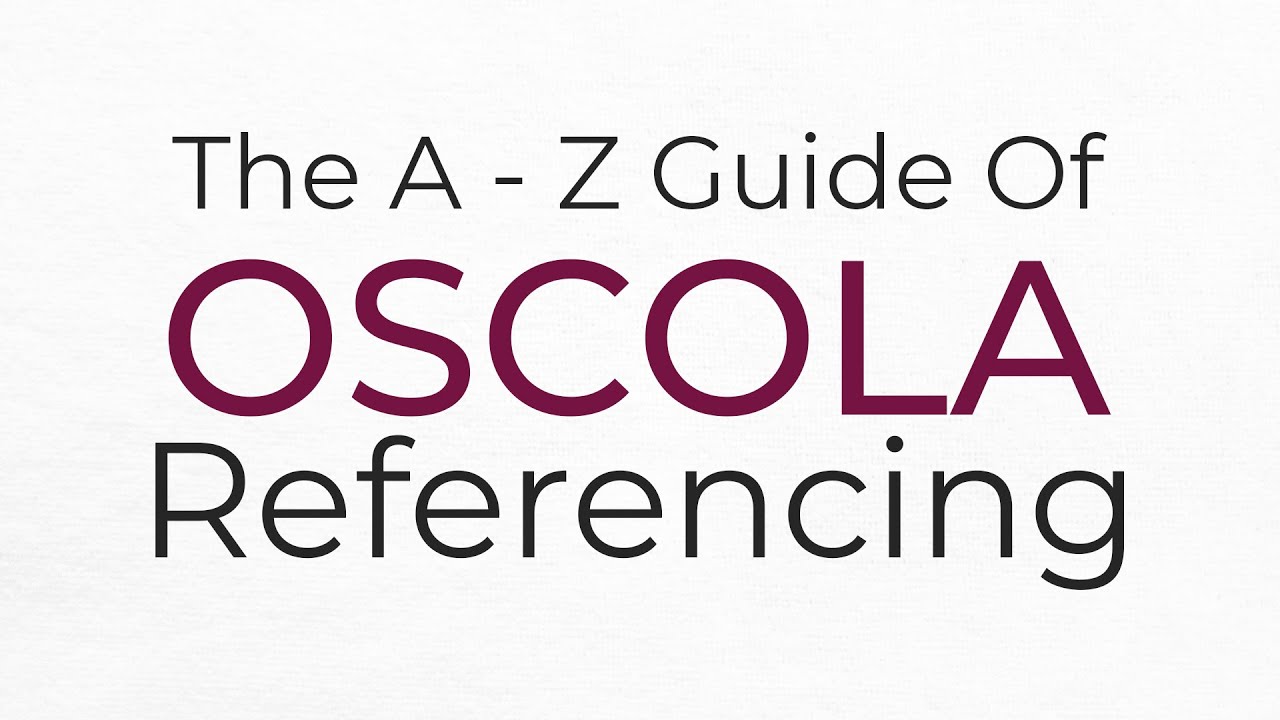OSCOLA referencing, or the Oxford Standard for the Citation of Legal Authorities, is the leading legal citation style used in the United Kingdom. Developed at Oxford University, it is designed to ensure clarity, consistency, and accuracy in legal writing. For law students, academics, and practising lawyers, mastering OSCOLA referencing is not just a formality – it is an essential skill for presenting legal arguments professionally and credibly.
Many students find OSCOLA referencing challenging at first because it differs from more familiar academic styles like APA, MLA, or Harvard. However, once the fundamentals are understood, it becomes a clear and logical system. The style relies heavily on footnotes for in-text citations and includes a structured bibliography at the end of the document. With practice and the help of an OSCOLA referencing generator, anyone can cite legal sources with confidence and precision.
What is OSCOLA Referencing?
OSCOLA referencing is the standard legal citation method in UK universities and legal publications. It is designed to make legal writing clear by separating references from the main text, using footnotes instead of in-text citations. This ensures the flow of legal argument is uninterrupted, while readers can still check sources easily.
It is used extensively in academic essays, dissertations, journal articles, and even professional court submissions. The system covers both primary sources, such as cases and statutes, and secondary sources, such as books and journal articles. For anyone working in law, OSCOLA referencing is a mark of professionalism and a key requirement in maintaining academic integrity.
OSCOLA Referencing Basics
The foundation of OSCOLA referencing lies in its precise rules for citing different types of sources. Footnotes are numbered sequentially throughout the text, and each citation must follow the formatting conventions outlined in the official OSCOLA guide. Punctuation, capitalisation, and italicisation must all be applied correctly for the citation to be valid.
Another distinctive feature is that OSCOLA referencing avoids brackets for dates unless they are necessary for understanding the reference. For example, in case law, a year in square brackets indicates the volume number, while round brackets indicate the year of judgment. Such details may seem small, but they are critical to accurate legal citation.
How to OSCOLA Reference Different Sources

When citing primary sources in OSCOLA referencing, case names should be italicised, followed by the neutral citation and law report reference if available. For example, a case citation might look like Smith v Jones [2001] EWCA Civ 123. Statutes are referenced simply by their title and year, such as Data Protection Act 2018, without commas or extra punctuation.
Secondary sources, including books, journal articles, and websites, follow their own formatting rules. A book reference lists the author’s name, title in italics, edition, publisher, and year. Journal articles require the author’s name, title in single quotation marks, the journal name in italics, volume number, and page. Websites require the author or organisation name, the page title, and the full URL. Each category must follow the correct format to comply with OSCOLA referencing standards.
Creating an OSCOLA Bibliography
An OSCOLA bibliography is a complete list of all the works cited in a document, divided into primary and secondary sources. Primary sources include case law and legislation, while secondary sources include books, articles, and online materials. This clear separation makes it easy for readers to locate references based on their type.
Bibliographies in OSCOLA referencing are arranged alphabetically by author surname for secondary sources and by case name for primary sources. Book titles are italicised, article titles are in roman type within single quotation marks, and all entries must be consistently formatted. A well-prepared OSCOLA bibliography not only meets academic requirements but also improves the overall readability of your legal writing.
Using OSCOLA Referencing Generators
An OSCOLA referencing generator is an online tool that creates legal citations automatically. By inputting source details, such as author, title, and publication date, the generator produces a correctly formatted OSCOLA reference instantly. This can save time and help avoid formatting errors.
Popular tools include Cite This For Me OSCOLA, LawTeacher.net’s OSCOLA generator, and Citation Machine. While these tools are convenient, they should not be relied upon blindly. Users should cross-check the output against the official OSCOLA guide to ensure it meets the strict requirements of legal citation. A generator is a helpful assistant, but it cannot replace a solid understanding of OSCOLA referencing rules.
Common OSCOLA Referencing Mistakes and How to Avoid Them
One of the most common mistakes in OSCOLA referencing is mixing it with other citation styles, such as including brackets in the wrong places or using the wrong order for publication details. The key to avoiding these errors is to follow the OSCOLA style guide closely and to proofread citations carefully.
Another frequent error is forgetting to include pinpoint references – specific page or paragraph numbers where the information can be found. These are essential in legal writing, as they guide the reader directly to the relevant section of a source. Omitting them can weaken the credibility of your work and make it harder for others to verify your references.
OSCOLA Quick Reference Guide
A quick reference guide for OSCOLA referencing is a compact resource containing the main citation rules and common examples for different types of legal sources. It is especially useful for students working under time pressure or needing a fast reminder of citation formats during exams or assignments.
Many universities provide downloadable OSCOLA quick reference guides that cover essential citation examples for cases, legislation, books, and online sources. Having one nearby can speed up your referencing process and reduce the risk of formatting errors, making it a valuable companion to the full OSCOLA referencing guide.
Conclusion
Mastering OSCOLA referencing is an essential skill for law students, researchers, and legal professionals in the UK. From creating accurate footnotes to compiling a properly formatted bibliography, every detail matters in achieving academic excellence and professional credibility.
With practice, the process becomes second nature, especially when supported by tools like OSCOLA referencing generators and quick reference guides. By combining careful attention to detail with the right resources, you can ensure your legal writing is accurate, authoritative, and polished.
Frequently Asked Questions
What is OSCOLA referencing used for?
Is OSCOLA the same as Oxford referencing?
How do I cite a case in OSCOLA format?
Do I need both footnotes and a bibliography in OSCOLA?
Can I use an OSCOLA generator for my university assignments?
What is the difference between OSCOLA and Harvard referencing?
Where can I find an OSCOLA quick reference guide?
How do I cite a website in OSCOLA?
What is the latest edition of OSCOLA?
Do international law schools use OSCOLA?
You may also read: weather oxford – Today’s Forecast & 14-Day UK Outlook




